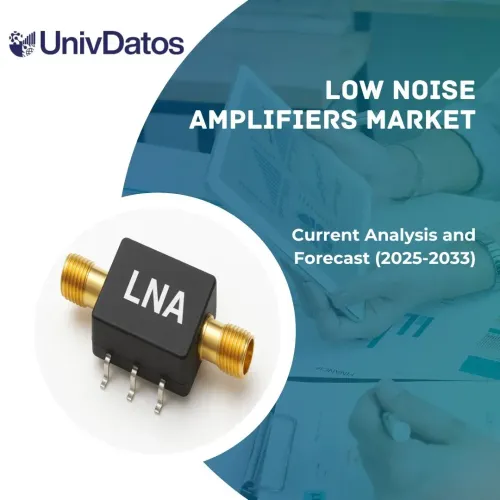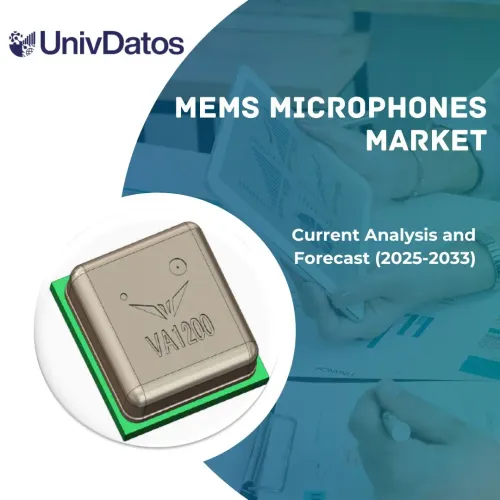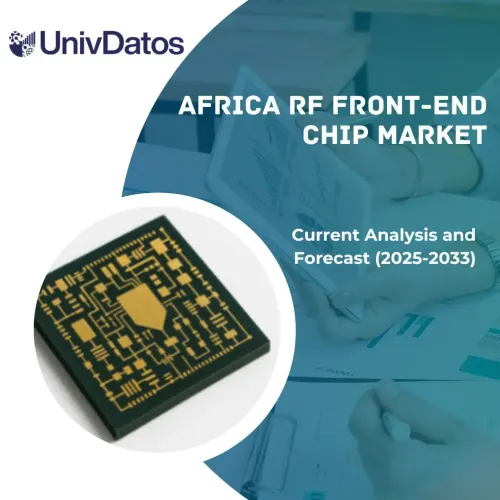OLED-on-Silicon 시장 규모 및 전망
OLED-on-Silicon 시장은 2023년에 4억 3,420만 USD로 평가되었으며 AR/VR 기술, 웨어러블 기기 및 기타 소형 전자 제품에서 고급 고해상도 마이크로 디스플레이에 대한 수요가 증가함에 따라 예측 기간(2024-2032) 동안 약 31.4%의 견조한 연평균 성장률(CAGR)로 성장할 것으로 예상됩니다.
OLED-on-Silicon 시장 분석
OLED-on-Silicon(OLEDoS) 시장은 디스플레이 산업의 특화된 분야로, 소형 고해상도 디스플레이를 만들기 위해 OLED 기술과 실리콘 기판의 통합에 중점을 둡니다. 이 시장은 특히 웨어러블 기기, 가상 현실(VR) 및 증강 현실(AR) 애플리케이션과 같은 가전 제품 분야에서 수요 증가에 의해 주도됩니다. 이러한 애플리케이션은 OLED 기술이 제공하는 뛰어난 이미지 품질, 대비 및 에너지 효율성의 이점을 크게 누리고 있습니다. 또 다른 중요한 요인은 근안 애플리케이션에 중요한 마이크로 디스플레이 기술의 지속적인 발전입니다. 이러한 기술이 발전함에 따라 군사, 의료 및 자동차 용도로 점점 더 많이 채택되어 시장 범위를 더욱 확장하고 있습니다.
OLED-on-Silicon 시장은 업계의 지형을 형성하는 상당한 투자와 전략적 기동이 특징입니다. 중요한 개발은 Active-Matrix OLED 마이크로 디스플레이의 설계 및 제조 혁신으로 유명한 미국의 주요 기업인 eMagin Corporation(NYSE American: EMAN)이 Samsung Electronics Co., Ltd.의 자회사인 Samsung Display Co., Ltd.에 인수되었을 때 발생했습니다. 최근에 완료된 이번 인수는 Samsung Display의 고해상도, AR/VR 및 기타 근안 이미징 제품으로의 전략적 확장을 의미합니다. 이 움직임은 첨단 애플리케이션에서 OLED 기술의 중요성이 커지고 있음을 나타내며 OLED 마이크로 디스플레이의 선도적인 혁신 기업과 세계 최고의 디스플레이 제조업체 간의 전문 지식과 리소스 통합을 나타냅니다. 이러한 개발은 이 틈새 시장에서 Samsung Display의 역량을 향상시킬 뿐만 아니라 경쟁 역학을 크게 변화시켜 잠재적으로 기술 발전과 제품 혁신을 가속화할 수 있습니다.
앞으로 OLED-on-Silicon 시장의 가장 빠르게 성장하는 지역은 아시아 태평양 지역이며, 특히 일본과 중국은 강력한 제조 기반과 디스플레이 산업의 기술 발전을 지원하는 것을 목표로 하는 정부 이니셔티브가 증가하고 있습니다. 예를 들어, 일본의 다양한 정부 지원 프로그램은 2023년부터 OLED 기술 연구 개발을 장려하여 글로벌 시장에서 선두 위치를 확보하는 것을 목표로 하고 있습니다. 이러한 노력은 유럽과 북미의 유사한 이니셔티브에 의해 보완되며, 여기서 정부는 글로벌 기술 시장에서 경쟁 우위를 유지하는 데 있어 첨단 디스플레이 기술의 전략적 중요성을 점점 더 인식하고 있습니다.
![]()
OLED-on-Silicon 시장 동향
이 섹션에서는 당사의 연구 전문가 팀이 확인한 OLED-on-Silicon의 다양한 부문에 영향을 미치는 주요 시장 동향에 대해 설명합니다.
OLED-on-Silicon 시장 산업을 지원하는 정부 정책
일본
정책: 일본 정부는 기술 혁신 자금 지원, 지적 재산 보호 및 대학-산업 협력 지원을 포함한 전략을 사용하여 전자 및 반도체 산업을 성장 목표로 삼았습니다.
영향: 이러한 지원은 Sony 및 Japan Display Inc.와 같은 기업이 계속 혁신하는 OLED를 포함한 다양한 기술에서 일본의 경쟁력을 유지하는 데 도움이 되었습니다.
유럽 연합
정책: Horizon Europe이 계승한 EU의 Horizon 2020 프로그램은 전자 및 재료 과학을 포함한 신기술 연구 및 혁신에 상당한 자금을 제공합니다.
영향: 이 정책은 수많은 OLED 관련 프로젝트를 촉진하여 첨단 디스플레이 기술 분야에서 이 지역의 역량을 강화했습니다.
미국
정책: 미국은 전자 및 디스플레이를 포함한 여러 부문에서 기술 혁신을 촉진하기 위해 연구 개발에 대한 다양한 연방 및 주 차원의 세금 인센티브를 제공합니다. 또한 미국의 미국 지적 재산 보호법은 자국 내에서 개발된 기술을 보호하는 것을 목표로 합니다.
영향: 이러한 정책은 eMagin 및 Apple과 같은 기업이 새로운 OLED 기술에 투자하고 개발하여 국내 하이테크 부문의 성장에 기여하는 데 도움이 됩니다.
중국
정책: 중국의 "Made in China 2025" 전략 계획은 세금 감면, 직접 자금 지원 및 인프라 지원을 제공하여 반도체 및 디스플레이 산업을 업그레이드 및 확장 대상으로 특별히 지정합니다.
영향: 이러한 포괄적인 지원을 통해 중국은 글로벌 OLED 시장에서 중요한 플레이어로 빠르게 변모했으며 BOE Technology와 같은 기업은 OLED 생산에서 빠르게 발전하고 있습니다.
이러한 정책은 하이테크 산업을 강화하려는 의지를 반영하며, 이는 OLED-on-Silicon 기술의 발전과 상용화에 매우 중요합니다. 각 프로그램은 지역 산업을 지원할 뿐만 아니라 경쟁과 혁신을 촉진하여 글로벌 OLED 생태계에도 기여합니다.
APAC은 예측 기간 동안 상당한 연평균 성장률로 성장할 것으로 예상됩니다.
아시아 태평양(APAC) 지역은 급속한 성장과 상당한 기술 발전으로 특징지어지는 OLED-on-Silicon(OLEDoS) 산업의 핵심 시장입니다. 이 지역에는 한국, 일본, 중국, 대만과 같은 여러 주요 기술 제조 허브가 있으며, 이들은 OLED 연구 및 생산의 최전선에 있습니다. 이들 국가의 가전 제품 제조업체의 높은 집중도는 특히 스마트폰, 웨어러블 기기 및 가상 현실 시스템과 같은 애플리케이션에서 OLED-on-Silicon 마이크로 디스플레이에 대한 상당한 수요를 촉진합니다. 경제적으로 APAC은 기술 부문에 대한 강력한 정부 지원, R&D에 대한 강력한 투자, 기술 혁신을 선호하는 정책의 혜택을 누리고 있습니다.
이러한 요인들이 결합되어 OLED-on-Silicon을 포함한 첨단 기술의 성장에 도움이 되는 환경을 조성합니다. 이 지역의 빠르게 성장하는 경제, 증가하는 중산층 인구 및 증가하는 가처분 소득은 또한 하이테크 소비재에 대한 수요 급증에 기여하여 시장을 더욱 발전시킵니다. 또한 APAC 지역에서는 OLED 기술의 경계를 넓히기 위해 학계와 산업 간의 협력이 증가하고 있습니다. 중국의 "Made in China 2025", 일본의 로봇 공학 및 센서 기술에 대한 전략적 집중, 한국의 디스플레이 기술에 대한 투자와 같은 이니셔티브는 하이테크 부문에서 선두를 확보하려는 이 지역의 의지를 강조합니다. 이것은 APAC을 OLED-on-Silicon 제품의 큰 시장일 뿐만 아니라 이 분야의 혁신 및 개발의 중심지로 만듭니다.
![]()
OLED-on-Silicon 시장 산업 개요
OLED-on-Silicon 시장은 경쟁적이고 파편화되어 있으며 여러 글로벌 및 국제 시장 참여자가 존재합니다. 주요 업체는 파트너십, 계약, 협업, 신제품 출시, 지리적 확장, 인수 합병과 같은 다양한 성장 전략을 채택하여 시장 입지를 강화하고 있습니다. 시장에서 활동하는 주요 업체 중 일부는 BOE Technology Group Co. Ltd., Sony Semiconductor Solutions Corporation, LG Display, eMagin(Samsung Display), Seiko Epson Corporation, Kopin Corporation, MICROOLED Technologies, Lakeside Optoelectronics Technology (Jiangsu) Co., Ltd., SeeYA Technology Corporation 및 INT Tech입니다.
OLED-on-Silicon 시장 뉴스
2023년 10월 – 고해상도, AR/VR 및 기타 근안 이미징 제품을 위한 Active-Matrix OLED 마이크로 디스플레이 개발, 설계 및 제조 분야에서 미국의 선두 주자인 eMagin Corporation(NYSE American: EMAN)(“eMagin” 또는 “회사”)은 Samsung Electronics Co., Ltd.의 자회사이자 디스플레이 제품의 제조업체 및 유통업체인 Samsung Display Co., Ltd.(“Samsung Display”)에 의한 인수 완료를 발표했습니다.
OLED-on-Silicon 시장 보고서 범위
![]()
이 보고서를 구매해야 하는 이유:
- 이 연구에는 인증된 주요 업계 전문가가 검증한 시장 규모 및 예측 분석이 포함되어 있습니다.
- 이 보고서는 전체 산업 성과에 대한 빠른 검토를 한눈에 제공합니다.
- 이 보고서는 주요 비즈니스 재무, 제품 포트폴리오, 확장 전략 및 최근 개발에 중점을 두고 주요 산업 동료에 대한 심층 분석을 다룹니다.
- 산업 전반에 걸쳐 만연한 동인, 제약, 주요 동향 및 기회에 대한 자세한 검토.
- 이 연구는 다양한 부문에 걸쳐 시장을 포괄적으로 다룹니다.
- 산업에 대한 심층적인 지역 수준 분석.
사용자 정의 옵션:
글로벌 OLED-on-Silicon은 요구 사항 또는 기타 시장 부문에 따라 추가로 사용자 정의할 수 있습니다. 이 외에도 UMI는 귀하가 고유한 비즈니스 요구 사항을 가질 수 있음을 이해하므로 귀하의 요구 사항에 완전히 적합한 보고서를 얻으려면 언제든지 저희에게 연락하십시오.
목차
OLED-on-실리콘 시장 분석(2024-2032)을 위한 연구 방법론
글로벌 OLED-on-실리콘의 과거 시장 분석, 현재 시장 추정 및 미래 시장 예측은 전 세계 주요 지역에서 OLED-on-실리콘의 채택을 창출하고 탐색하기 위해 수행된 세 가지 주요 단계였습니다. 과거 시장 수치를 수집하고 현재 시장 규모를 추정하기 위해 철저한 2차 조사가 수행되었습니다. 둘째, 이러한 통찰력을 검증하기 위해 수많은 조사 결과와 가정을 고려했습니다. 또한, 글로벌 OLED-on-실리콘의 가치 사슬 전반에 걸쳐 업계 전문가들과 심층적인 1차 인터뷰도 진행했습니다. 1차 인터뷰를 통해 시장 수치를 가정하고 검증한 후, 전체 시장 규모를 예측하기 위해 하향식/상향식 접근 방식을 사용했습니다. 이후, 산업의 세분 시장 및 하위 세분 시장의 시장 규모를 추정하고 분석하기 위해 시장 세분화 및 데이터 삼각 측정 방법을 채택했습니다. 자세한 방법론은 아래에 설명되어 있습니다.
과거 시장 규모 분석
1단계: 2차 출처에 대한 심층 연구:
연례 보고서 및 재무 제표, 실적 발표, 보도 자료 등과 같은 회사 내부 출처와 저널, 뉴스 및 기사, 정부 간행물, 경쟁사 간행물, 부문 보고서, 타사 데이터베이스 및 기타 신뢰할 수 있는 간행물을 포함한 외부 출처를 통해 OLED-on-실리콘의 과거 시장 규모를 얻기 위해 자세한 2차 연구가 수행되었습니다.
2단계: 시장 세분화:
OLED-on-실리콘의 과거 시장 규모를 확보한 후, 주요 지역에 대한 다양한 세분 시장 및 하위 세분 시장에 대한 과거 시장 통찰력과 점유율을 수집하기 위해 자세한 2차 분석을 수행했습니다. 주요 세분 시장에는 제품 유형, 애플리케이션 및 디스플레이 크기와 같은 보고서가 포함됩니다. 또한 해당 지역에서 테스트 모델의 전체 채택을 평가하기 위해 국가 수준 분석을 수행했습니다.
3단계: 요인 분석:
다양한 세분 시장 및 하위 세분 시장의 과거 시장 규모를 획득한 후, OLED-on-실리콘의 현재 시장 규모를 추정하기 위해 자세한 요인 분석을 수행했습니다. 또한, OLED-on-실리콘 시장의 제품 유형, 애플리케이션 및 디스플레이 크기와 같은 종속 변수와 독립 변수를 사용하여 요인 분석을 수행했습니다. 전 세계 OLED-on-실리콘 부문에서 상위 파트너십, 합병 및 인수, 사업 확장 및 제품 출시를 고려하여 수요 및 공급측 시나리오에 대한 철저한 분석을 수행했습니다.
현재 시장 규모 추정 및 예측
현재 시장 규모 측정: 위 3단계의 실행 가능한 통찰력을 바탕으로 현재 시장 규모, 글로벌 OLED-on-실리콘의 주요 업체 및 세분 시장의 시장 점유율에 도달했습니다. 필요한 모든 백분율 점유율 분할 및 시장 세분화는 위에 언급된 2차 접근 방식을 사용하여 결정되었으며 1차 인터뷰를 통해 확인되었습니다.
추정 및 예측: 시장 추정 및 예측을 위해 이해 관계자에게 제공되는 동인 및 추세, 제약 및 기회를 포함한 다양한 요인에 가중치가 부여되었습니다. 이러한 요인을 분석한 후, 관련 예측 기술, 즉 하향식/상향식 접근 방식을 적용하여 전 세계 주요 시장에서 다양한 세분 시장 및 하위 세분 시장에 대한 2032년 시장 예측에 도달했습니다. 시장 규모를 추정하기 위해 채택된 연구 방법론은 다음과 같습니다.
수익(USD) 측면에서 산업의 시장 규모와 국내 주요 시장에서 OLED-on-실리콘의 채택률
시장 세분 시장 및 하위 세분 시장의 모든 백분율 점유율, 분할 및 세분화
제공되는 제품 측면에서 글로벌 OLED-on-실리콘의 주요 업체. 또한 빠르게 성장하는 시장에서 경쟁하기 위해 이러한 업체가 채택한 성장 전략
시장 규모 및 점유율 검증
1차 연구: 주요 지역에서 최고 경영진(CXO/VP, 영업 책임자, 마케팅 책임자, 운영 책임자, 지역 책임자, 국가 책임자 등)을 포함한 핵심 오피니언 리더(KOL)와 심층 인터뷰를 진행했습니다. 그런 다음 1차 연구 결과를 요약하고 통계 분석을 수행하여 명시된 가설을 입증했습니다. 1차 연구의 입력 내용은 2차 조사 결과와 통합되어 정보를 실행 가능한 통찰력으로 전환했습니다.
다양한 지역의 1차 참가자 분할
![]()
시장 엔지니어링
전반적인 시장 추정을 완료하고 글로벌 OLED-on-실리콘 시장의 각 세분 시장 및 하위 세분 시장에 대한 정확한 통계 수치에 도달하기 위해 데이터 삼각 측정 기술이 사용되었습니다. 글로벌 OLED-on-실리콘 시장에서 제품 유형, 애플리케이션 및 디스플레이 크기 영역의 다양한 매개변수와 추세를 연구한 후 데이터를 여러 세분 시장 및 하위 세분 시장으로 분할했습니다.
글로벌 OLED-on-실리콘 연구의 주요 목표
글로벌 OLED-on-실리콘의 현재 및 미래 시장 동향이 연구에서 정확히 지적되었습니다. 투자자는 연구에서 수행된 질적 및 양적 분석을 기반으로 투자에 대한 재량을 행사하기 위한 전략적 통찰력을 얻을 수 있습니다. 현재 및 미래 시장 동향은 지역 수준에서 시장의 전반적인 매력을 결정하여 산업 참가자가 미개척 시장을 활용하여 선점자 이점을 누릴 수 있는 플랫폼을 제공했습니다. 연구의 다른 양적 목표는 다음과 같습니다.
- 가치(USD) 측면에서 OLED-on-실리콘의 현재 및 예측 시장 규모를 분석합니다. 또한 다양한 세분 시장 및 하위 세분 시장의 현재 및 예측 시장 규모를 분석합니다.
- 연구의 세분 시장에는 제품 유형, 애플리케이션 및 디스플레이 크기 영역이 포함됩니다.
- OLED-on-실리콘 산업에 대한 규제 프레임워크를 정의하고 분석합니다.
- 다양한 중개자의 존재와 관련된 가치 사슬을 분석하고 업계의 고객 및 경쟁업체 행동을 분석합니다.
- 주요 지역에 대한 OLED-on-실리콘의 현재 및 예측 시장 규모를 분석합니다.
- 보고서에서 연구된 지역의 주요 국가에는 아시아 태평양, 유럽, 북미 및 기타 지역이 포함됩니다.
- OLED-on-실리콘의 회사 프로필과 빠르게 성장하는 시장에서 생존하기 위해 시장 참여자가 채택한 성장 전략
- 업계에 대한 심층적인 지역 수준 분석
자주 묻는 질문 자주 묻는 질문
Q1: OLED-on-실리콘 시장의 현재 시장 규모와 성장 잠재력은 무엇입니까?
Q2: OLED-on-Silicon 시장 성장의 주요 동인은 무엇입니까?
Q3: 제품 유형별 OLED-on-Silicon 시장에서 가장 큰 점유율을 차지하는 부문은 무엇입니까?
Q4: OLED-on-실리콘 시장의 새로운 기술 및 트렌드는 무엇입니까?
Q5: OLED-on-Silicon 시장에서 어느 지역이 우위를 점할 것인가?
관련 보고서
이 상품을 구매한 고객님들도 함께 구매하신 상품








